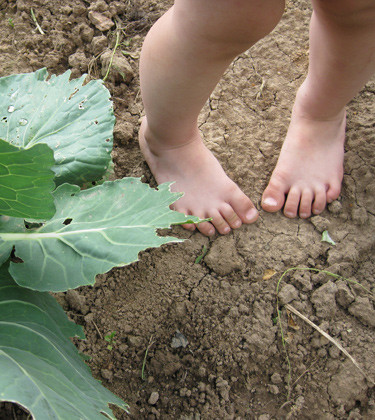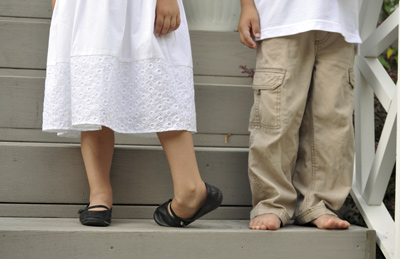Active Kids Series: Bow Legs

It is very common for toddlers to exhibit signs of bowed legs when they are very young. Children with bowed legs will usually have a distinct gap between the knees and the lower legs when they stand with their feet together. Bowed legs can affect one or both legs, and parents or the child’s pediatrician may notice that the legs are beginning to curve outward within the first few years of life.
Causes of Bowed Legs in Children
Most children who exhibit bowed legs as babies have physiologic genu varum, which is not a cause for concern for the child. In most cases, it will eventually correct itself and will not affect the child’s mobility or result in any long-term complications.
Children with significant bowing may be evaluated for Blount’s disease, which is a condition that results in abnormality in the growth plate of the tibia, or upper shinbone. For children under 2 years of age, doctors may not be able to distinguish the bowing from physiologic genu varum, but by 3 years of age, if the bowing has not resolved itself physicians may perform an X-ray on the legs to determine whether the child has Blount’s disease.
Rickets can also cause bow legs in children. This bone disease may result in other deformities with the bones. Rickets is uncommon in developed countries because the condition results from a lack of vitamin D, calcium, and phosphorous in the child’s diet. Many foods in developed countries are fortified with these vitamins to ensure that children and adults are maintaining the proper level of nutrition in their bodies.
Symptoms Associated with Bowed Legs
The symptoms of bowed legs are most obvious when the child walks or stands. One common symptom of bowed legs is an awkward and uncoordinated walking pattern. Another symptom that toddlers often present with bowed legs is called intoeing or turning in of the feet. Children with bowed feet are not typically delayed in meeting developmental milestones, but the bowing can appear quite alarming. While bowed legs do not usually cause pain, prolonged bowing into adolescence can cause hip discomfort or knee/ankle pain due to the increased stress on these joints. Children with bowed legs may also trip or lose their balance more frequently.

Treatment Options for Bow Legs: Surgical and Non-Surgical
Several different treatment options are available for children with bowing, including both surgical and non-surgical options.
Toddlers with physiologic genu varum do not require active treatment, but your pediatrician will want to see your child often until the condition is resolved. In very rare cases, the bowing may not completely resolve, and parents may have aesthetic concerns. In these cases, surgery may be used to correct the bowing that did not resolve on its own.
Children with Blount’s disease do require treatment to significantly improve the bowing. If the condition is caught while the child is still young, he or she may be fitted with braces to correct the condition. If the bowing continues to progress or is not resolved through braces, surgery may be needed by the time the child is 4 years of age. Older children require surgery to correct the condition and prevent permanent damage to the growth plates.
Children with rickets will often be sent to a specialist that will help to correct the metabolic deficiencies in the child, and a consult with an orthopedic surgeon is often recommended as well. The bowing caused by rickets can often be resolved with medication. If deformities exist after proper medications have been administered, the child may be a candidate for surgery.
